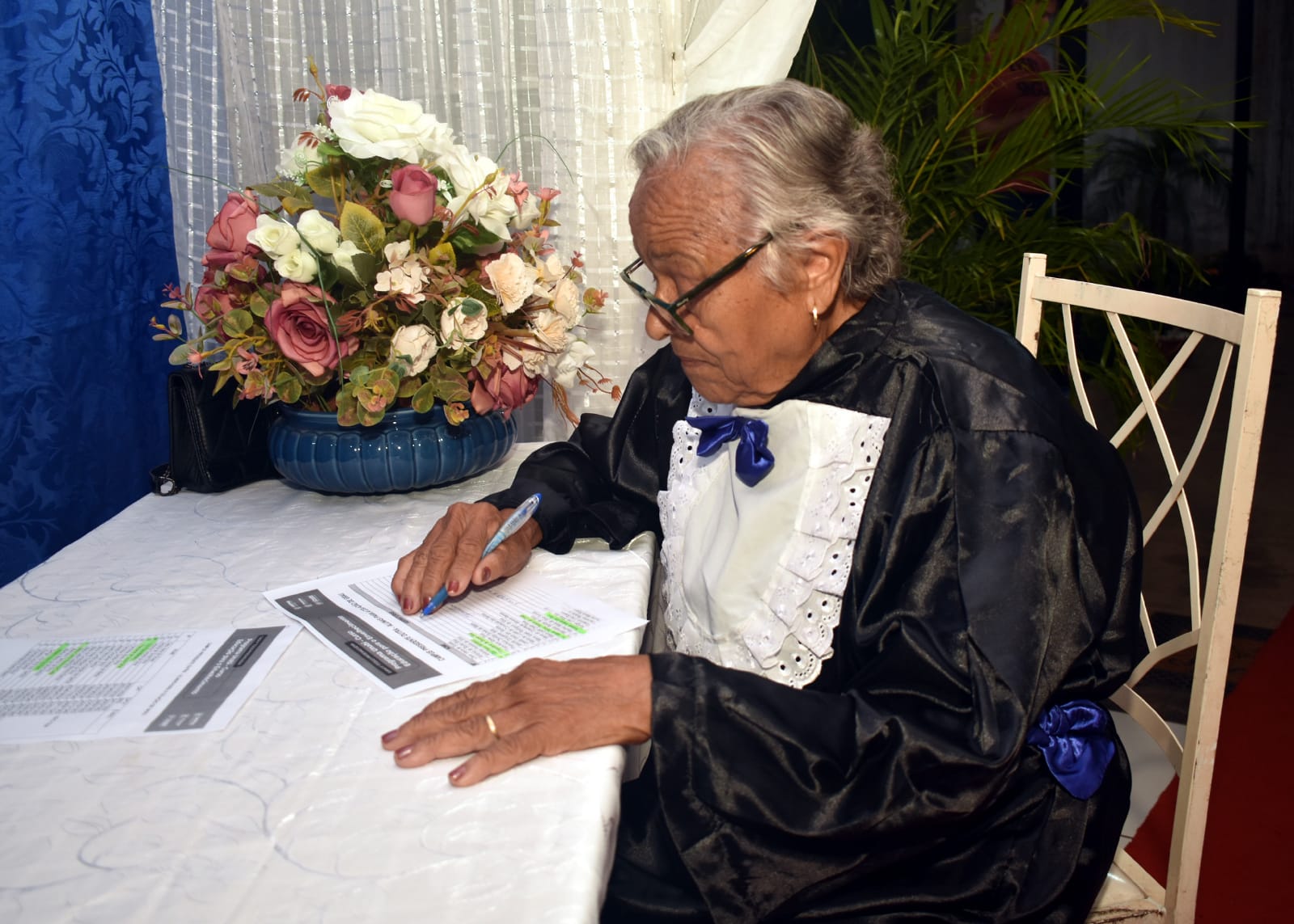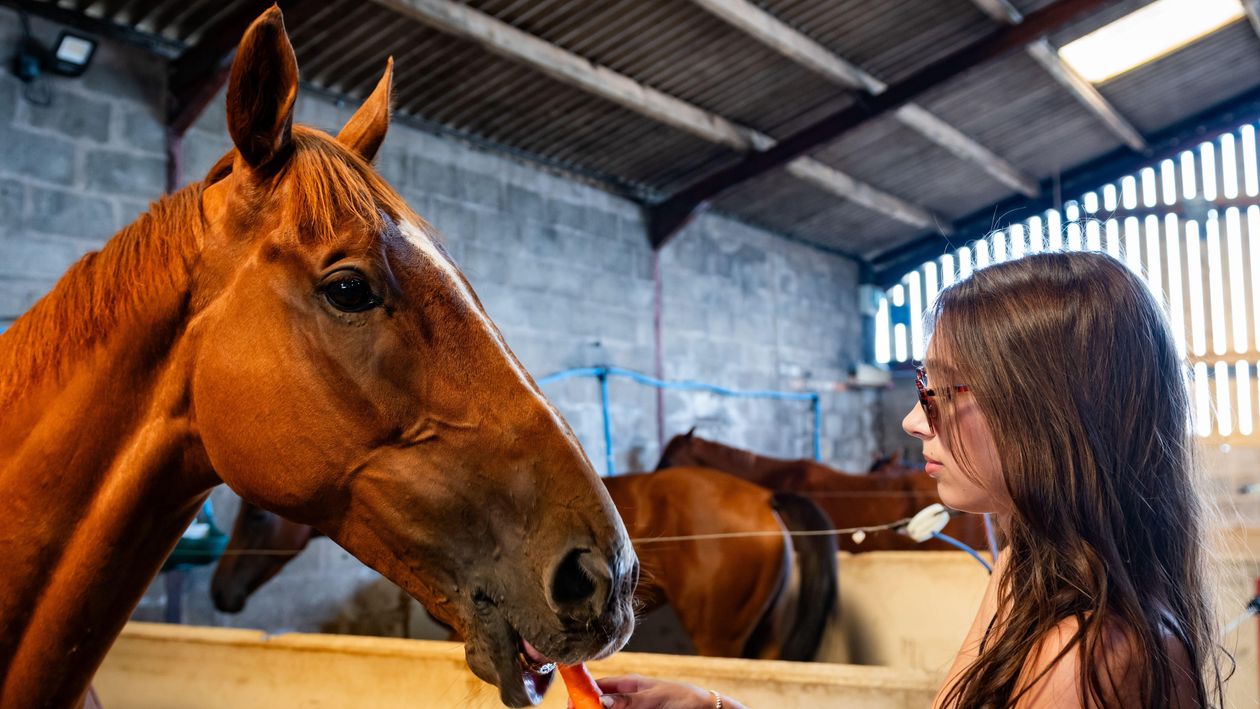NFL
Who makes your team’s best all-English XI of the Premier League era?

It is 25 years since a Premier League manager named a starting line-up made up entirely of English players.
On February 27, 1999, Aston Villa boss John Gregory sent out this side to face Coventry City (predictably enough, they lined up in a 4-4-2 formation):
Michael Oakes; Steve Watson, Riccardo Scimeca, Gareth Southgate, Alan Wright; Paul Merson, Ian Taylor, Simon Grayson, Lee Hendrie; Dion Dublin, Julian Joachim.
Little did anyone realise we would not see another all-English XI in the Premier League over the next quarter of a century. We have come close — Burnley manager Sean Dyche selected a team of 10 Englishmen and Matej Vydra for a game against Tottenham Hotspur in 2021 — but the Premier League’s ability to recruit the best players from around the world has meant English players are often in the minority.
To mark the anniversary, we asked our club writers to pick their team’s best all-English XI of the Premier League era (we’ve not included Luton Town, since they have only been a Premier League team for less than a season).
Going from back to front, David Seaman is one of the many certainties in this team.
Lee Dixon and Tony Adams have to feature in the back line. Steve Bould and Nigel Winterburn or Sol Campbell and Ashley Cole could be debatable to fill the rest of the defence, however. The first two have years of consistency in that back four on their side, but the heights reached by Campbell and Cole were greater.
Midfield is probably the most contentious area of the pitch. Before he is mentioned, David Rocastle would have been included but he left Arsenal before the Premier League era began. The trio of Ray Parlour, Jack Wilshere and Paul Merson is not very defensive but, based on pure talent and Arsenal’s tendency to be possession-based, would be a joy to watch.
There is only one striker who could be picked and that is Arsenal’s second-highest goalscorer, Ian Wright. Two more modern selections come on the wings, with Theo Walcott’s blistering pace and out-to-in runs featuring off the right. Bukayo Saka takes the spot on the left wing, where he spent most of his academy days, and can be a more direct threat. He and Wilshere are also the only English winners of Arsenal’s player-of-the-season award since 2000.
Honourable mentions: Martin Keown, Steve Bould, Nigel Winterburn, Declan Rice, Paul Davis, Alan Smith
Art de Roche
Aston Villa
English XI (3-4-1-2): James; Young, Southgate, Mings; Milner, Barry, Taylor, Grealish; Merson; Agbonlahor, Watkins
A disclaimer to begin: Villa have not been blessed with English goalkeepers in the Premier League era or “traditional” full-backs. So David James’ two years either side of the millennium edges it, while to compensate for the shortage of full-backs, James Milner and Jack Grealish — increasingly helped by Ashley Young and Tyrone Mings on the outside of a back three — will provide the width. Admittedly, Young was at his best at Villa on the left wing but needs to fit into an attacking side packed with talent.
Milner will play a defensive role, shuffling into a back four, and Mings can move to left-back to give the Grealish of old all the attacking licence he wants. Gareth Southgate will marshall the defence, earnestly carrying out his duties, even if he is not exactly liked at Villa Park these days — against Manchester United this month, Southgate was roundly booed by supporters when he appeared on the big screen.

Gareth Southgate, a leader on the pitch for Aston Villa before becoming a manager (Phil Cole/Allsport)
A lot of that has to do with the perceived bias against Villa, with Ollie Watkins (up front in this team) and Ezri Konsa often being overlooked for England squads.
Villa are, however, rich with talent in central and attacking areas. A midfield pivot of the indomitable Gareth Barry and club legend Ian Taylor will provide structure and cover for Paul Merson to weave and yield his magic further forward, finding the runs and sheer pace of Gabby Agbonlahor and Watkins.
Honourable mentions: Ugo Ehiogu, Alan Wright, Ezri Konsa, Dion Dublin, Lee Hendrie
Jacob Tanswell
English XI (4-4-2): Ramsdale; A Smith, Francis, S Cook, Daniels; Stanislas, Brooks, Gosling, L Cook, Pugh; Solanke, Wilson
The majority of this team played together in Eddie Howe’s promotion-winning side in 2015, with an English core forming the bedrock of such remarkable success. Adam Smith, Simon Francis, Steve Cook and Charlie Daniels were the first-choice back four, all having served their time in the lower leagues to rise prominently and embody the underdog-type mentality Bournemouth held.
Aaron Ramsdale was signed from Sheffield United as a youngster, was the outstanding figure in the 2019-20 campaign and is Bournemouth’s best English goalkeeper since their first promotion to the top flight nearly a decade ago. Elsewhere, the 4-4-2 shape was Howe’s favoured formation throughout his time at the club, with Dan Gosling an example of the big heart and underdog mindset Howe’s players possessed.
Lewis Cook’s longevity, despite still being only 27, edges out Andrew Surman in central midfield, while Junior Stanislas is one of the most prodigious talents Bournemouth have had. Up front, Dominic Solanke and Callum Wilson lead the line, with Solanke dropping deep to connect play and enabling Wilson to be the out-and-out No 9 he continues to be.
Honourable mentions: Tommy Elphick, Lloyd Kelly, Surman
Jacob Tanswell
English XI (4-3-3): Bentley; Konsa, Tarkowski, Mee, Henry; Saunders, Dasilva, McEachran; Watkins, Lewis-Potter, Toney
This is only Brentford’s third season in the Premier League, so we need to dip into their modern Championship squads to complete our starting XI. Supporters are still angry about the way James Tarkowski left the club in 2016 but, with more than 250 top-flight appearances for Burnley and Everton, he makes the cut in central defence alongside Ben Mee, while Ezri Konsa can slot in at right-back. Dan Bentley made more than 100 Championship appearances for the club and starts in goal. Rico Henry, who has been one of Brentford’s best performers over the past few years, is an easy pick for the left-back spot.
Ollie Watkins has been in phenomenal form for Aston Villa this season in a central striking role, but he is comfortable on the left, too, which means Ivan Toney can lead the line with Keane Lewis-Potter on the right. It is a front three that contains a lovely blend of speed, physicality and skill.
Rounding off the side in midfield is the technical combination of Sam Saunders, Josh McEachran and Josh Dasilva. Fans can dream about the beautiful passing patterns Saunders and Dasilva, in particular, would have conjured up to carve opponents open.
Jay Harris
Brighton & Hove Albion
English XI (3-4-1-2): Steele; Webster, Dunk, Burn; White, Hinshelwood, Milner, March; Lallana; Murray, Welbeck
The squad to choose from is limited because Brighton have only been in the Premier League for seven seasons. Tariq Lamptey is disallowed due to international caps for Ghana, while a lot of the recruitment is concentrated on value for money in foreign markets.
Jason Steele, given a new lease of life by Roberto De Zerbi, is an obvious pick in goal. Lewis Dunk, who scored a stoppage-time equaliser against Everton on Saturday on his 400th league appearance for the club, forms a solid back three with Adam Webster and Dan Burn.
Ben White and Solly March provide energy in wide areas. Jack Hinshelwood, 18, is such a bright prospect, even on limited evidence. I’ll play him where his long-term future lies, in central midfield rather than right-back.
He needs an old head alongside him. The versatile James Milner gets the nod there over an unlucky Dale Stephens. Adam Lallana offers ingenuity in the No 10 role behind Glenn Murray and Danny Welbeck.
Andy Naylor
Burnley
English XI (4-4-2): Pope; Trippier, Tarkowski, Mee, Taylor; Blake, Cork, Westwood, McNeil; Barnes, Ings
Burnley have spent nine seasons in the Premier League, with a squad that stayed largely consistent, so choices are limited.
Blessed with several England internationals to have played between the sticks, Nick Pope just edges out Tom Heaton. Both were excellent, consistent performers, but ultimately Pope took Heaton’s place and, when fit, kept hold of it.
James Tarkowski and Ben Mee formed a formidable, physical, no-nonsense centre-back pairing, so they can’t be separated. Charlie Taylor provides energy and defensive guile on the left flank and Dyche’s favourite, Kieran Trippier, completes the back four to provide plenty of creativity down the right.
For many years, Burnley teams lacked pace, so I’ve picked a midfield to suit. Dwight McNeil’s crossing coupled with Robbie Blake’s technical quality provides the creativity, while Jack Cork and Ashley Westwood are the trusty energetic anchors in the middle.
A Burnley team can’t be complete without Ashley Barnes and he’s partnered by Danny Ings, although I can feel Jay Rodriguez’s eyes burning a hole in the back of my head already.
Andy Jones

As one of the clubs that leaned hardest into the Premier League’s foreign influx around the turn of the millennium, Chelsea’s high-end domestic talent pool is not as big as some — and it is much deeper in some positions than others.
Ashley Cole is a wholly uncontroversial pick at left-back, but his presence rules out quality alternatives Graeme Le Saux, Wayne Bridge and Ben Chilwell. Behind him, Kevin Hitchcock is the only English goalkeeper who spent any stretch of the Premier League era as Chelsea’s starter between the sticks (making 20 appearances in the 1992-93 season).
Dennis Wise, John Terry, Frank Lampard, Joe Cole and Mason Mount have all been voted Chelsea’s player of the year at least once in the Premier League era.
Then we come to the younger selections: Reece James has already surpassed Glen Johnson’s achievements as a right-back at Stamford Bridge, while Tammy Abraham’s tally of 15 league goals in 2019-20 is the best scoring return of any Englishman not named Lampard for Chelsea in the history of the competition.
Mount’s positioning in midfield makes Conor Gallagher the harshest omission, but it does allow room for Cole Palmer, whose debut Premier League campaign for Chelsea has already yielded 10 goals and six assists, with plenty of time to be even more impactful.
Liam Twomey
English XI (4-4-2): Martyn; Wan-Bissaka, Dann, Guehi, Mitchell; Routledge, Southgate, Eze, Salako; Armstrong, Johnson
There is some recency bias here, but Palace’s stints in the Premier League had been few and far between before the past decade. More recently, the increase in foreign talent has been reflected in the squad’s make-up.
Nigel Martyn is regarded as the club’s greatest goalkeeper.
Aaron Wan-Bissaka emerged from the academy to impress at right-back. Scott Dann was instrumental in keeping Palace away from relegation over seven years. Meanwhile, Marc Guehi has been one of the best centre-backs in the division since signing from Chelsea in 2021. Tyrick Mitchell has performed consistently since his debut in 2020.
In midfield, Gareth Southgate was a stalwart and steered the club as captain. Eberechi Eze has produced many moments of brilliance. The wingers are more difficult but Wayne Routledge was an exciting youngster in 2004-05 and John Salako was key in 1992-93.
Andrew Johnson’s 21 goals in 2004-05 made him the highest-scoring English player that season, while Chris Armstrong’s 23 across 1992-93 and 1994-95 held the club record until Wilfried Zaha surpassed him in 2018.
Matt Woosnam
Everton
English XI (4-4-2 diamond): Pickford; Hibbert, Jagielka, Lescott, Baines; Barry (DM), Osman, Barkley, Rooney (AM); Campbell, Calvert-Lewin
I’m going with players I’ve seen in the flesh, so that means no Dave Watson, no Peter Beardsley. Sorry, chaps.
Jordan Pickford pips Nigel Martyn in goal due to his longevity and influence in keeping Everton in the league in recent seasons.
Tony Hibbert was a stalwart of the David Moyes era and superb defensively, while Phil Jagielka and Joleon Lescott were such an effective partnership alongside him. Left-back is easy: Leighton Baines. He had a brilliant left foot and made the PFA’s team of the year twice at a time when the league was blessed with top full-backs
Gareth Barry was a brilliant addition during the Roberto Martinez era. So composed, so steady. Leon Osman, another key figure for Moyes, was vastly underrated at times and capped by England later in his career. Ross Barkley’s time at Everton started so well and promised so much but ended controversially. Still, there were some memorable moments, including a solo goal at Newcastle United.
It was so exciting watching Wayne Rooney break through. He was on a different level from anyone else in the squad at that time. The only shame was that Everton didn’t get to enjoy his peak years.
Kevin Campbell’s goals saved the club from relegation in 1999, while Dominic Calvert-Lewin sits fourth on their list of Premier League scorers (first among English players). His 29 goals between 2019 and 2021 serve as a reminder of how effective he can be at his best.
Patrick Boyland
English XI (4-4-2 diamond): Bettinelli; Rosenior, Adarabioyo, Knight, Konchesky; Reed (DM), Davis, Murphy, Clark (AM); Zamora, Johnson
First of all, the disclaimer. This will focus on who showed their best for Fulham. So Chris Smalling, who played on fleetingly for the club before being whisked off to Manchester United, misses out. As does Scott Parker, who played for the club at the end of his career.
So, we are left with this pretty feasible team. Solid, if a bit narrow (a tactical mess, really). They could probably eke out a mid-table finish in the late 2000s if managed by Roy Hodgson.
Fulham’s Premier League-era sides were not packed with English players. This has been the case with goalkeepers in particular, which gives Marcus Bettinelli a run at the No 1 spot over nearest contender David Stockdale.
Europa League finalist Paul Konchesky gets the nod over Ryan Sessegnon at left-back. Konchesky is one of two England internationals in the back line, along with Zat Knight (two caps). Tosin Adarabioyo could well earn one himself in the coming years. Liam Rosenior, a former England Under-21 international, provides the width on the right.
Midfield was problematic. Bar Lee Clark, there is a dearth of wide options, so he assumes an attacking midfield role. Central midfield is a bit more stacked. Danny Murphy captains the team and he is joined by Sean Davis and Harrison Reed, who scurries in to take the defensive midfield role. Steve Sidwell cruelly misses out.
Bobby Zamora is the last Fulham player to have been capped by England while playing for the club, so he’s a certain pick. Andy Johnson pips Andy Cole. Yes, Cole had a better strike rate in his single season with Fulham in 2004-05 (12 league goals from 31 appearances compared to 13 goals from 86 for injury-troubled Johnson), but Johnson played his part in 2010 and is a better fit alongside Zamora.
Honourable mentions: Sidwell, Cole, Parker, Sessegnon, Alfie Mawson, Smalling, Stockdale.
Peter Rutzler

There are not a lot of options when it comes to goalkeepers and David James was the only one who was a consistent first-team player, even if he carried the “calamity” nickname.
Trent Alexander-Arnold is a generational talent, Jamie Carragher is the prototypical defensive leader, Mark Wright can be the ball-player and Joe Gomez gets the nod at left-back, where there were few options.
Two Liverpool captains, Steven Gerrard and Jordan Henderson, will dominate the midfield, with the former all-action and the latter providing the balance. Then John Barnes and Steve McManaman provide technical brilliance and creative quality from the flanks.
Given Darwin Nunez is frequently described as a ‘s*** Andy Carroll’ and he’s extremely good, I had to consider Carroll. Then I stopped attempting to be funny and went for two clinical finishers, Michael Owen and Robbie Fowler. Two of the best goalscorers of the Premier League era.
Andy Jones

The logic here is that these are the best English players who played for City in the Premier League. Compared to some other top teams of the era, City’s England internationals are of a pretty high standard and this team boasts title winners in all but one position. That could be changed on a technicality by putting Frank Lampard in the midfield and many would, but in the spirit of keeping it especially City-focused, let’s go with Phil Foden in the middle instead of Lampard and put Shaun Wright-Phillips (the only player who did not win a title but was certainly a quality player and beloved by the City fans) on the wing.
That leaves Raheem Sterling as the central striker, which is not exactly ideal, but the players more or less pick themselves and they would probably give the other teams the runaround — apart from maybe Arsenal.
Sam Lee
Manchester United

Thirteen Premier League titles mostly won with a core of homegrown talent makes selecting United’s all-English XI from 1992 onwards easy for the most part.
And given the ’90s vibes, we’re playing the system favoured by Sir Alex Ferguson’s first great teams — a traditional 4-4-2, but with one of the strikers dropping off.
Wayne Rooney takes up that role behind Andy Cole. That’s just the 395 Premier League goals between them, including 276 for United.
At the back, the older of the two Neville brothers has to be preferred. Luke Shaw is the only member of the 2023-24 playing squad to make the cut. Rio Ferdinand and Gary Pallister would complement each other well as a partnership.
The memory of David Beckham the player is overshadowed by that of Beckham the celebrity. By contrast, Paul Scholes was a far less flamboyant character but, to many, has become a better player since he retired. Both have to be in this XI on pure ability.
And though Bryan Robson carried United on his back during the 1980s, his influence had diminished by the time of Ferguson’s first two title wins. He’ll not begrudge a place for Michael Carrick.
There are two problem positions. Ryan Giggs’ longevity leaves only a couple of options on the left. It only seems fair for Lee Sharpe, edged out by Giggs’s emergence, to reclaim that spot.
In goal, it comes down to a three-way choice between Gary Walsh, Ben Foster and Dean Henderson — each having made no more than 13 appearances. As the only one of that trio who can call himself a Premier League winner, Walsh gets the nod.
Mark Critchley
Newcastle United

We’re talking full-on Kevin Keegan tribute act; Brut 33, double denim, all-out attack and a team that would lose every game 10-9, but we’d love it, love it just the same.
All we can do is to use the assets at our disposal and this front four surely picks itself. Alan Shearer and Les Ferdinand played together for a single destructive season, Andy Cole cannot be sacrificed and Peter Beardsley is one of the greatest players in Newcastle’s history. F*** balance, let’s dance.

Has there been a better English front two in the Premier League than Alan Shearer and Les Ferdinand? (Ben Radford/Allsport/Getty Images/Hulton Archive)
Rob Lee offers midfield legs while David Batty is a laughable nod at protection. Jonathan Woodgate is a certainty and Steve Howey was imperious before injury intervened. From the current side, Kieran Trippier is a no-brainer, plus somebody has to fire in crosses for those strikers.
Left-back is a problem. Dan Burn was a mainstay of the Premier League’s joint-meanest defence last season but hardly fits the tone of this team. So John Beresford bombs on and glorious oblivion beckons.
Steve Harper, Newcastle’s longest-serving player, gets the nod over Nick Pope in goal.
In a year or two, this XI might look very different. Eddie Howe’s Newcastle has an English core and Pope, Sean Longstaff, Lewis Miley, Anthony Gordon, Burn, Callum Wilson and others already have decent claims. We could leave out Cole and Beardsley, say, and build a stronger unit, but where would be the fun in that?
George Caulkin
English XI (4-4-2): Henderson; Laws, Chettle, Cooper, Pearce; Stone, Webb, Bart-Williams, Woan; Clough, Collymore
Yes, I’ll hold my hands up. I debated for a while how it might be possible to shoehorn Ryan Yates or Joe Worrall into this starting XI as two men who played a key role in Nottingham Forest’s long-overdue return to the Premier League in 2022. Morgan Gibbs-White can feel an even greater sense of injustice at not being included given his status as one of the most important players in the modern-day side.
Harry Toffolo is an inspirational character who is having an impact off the pitch as well as on it. But… Stuart Pearce.
Forest’s widespread recruitment net has meant the current squad has only a handful of English players, with Callum Hudson-Odoi starting to make a positive impact. He and Gibbs-White are young men with bright futures.
Dean Henderson gets the nod in goal, largely because Barnsley-born Mark Crossley played for Wales.
So we have to wind the clock back to the early days of the Premier League, when Forest had numerous players who picked up England caps, including regulars Pearce, Neil Webb and Nigel Clough, plus Colin Cooper, Steve Stone, Ian Woan and Stan Collymore.
Paul Taylor
Sheffield United
English XI (3-5-2): Henderson; Basham, Jagielka, O’Connell; Gage, Lundstram, Hoyland, Tongue, Whitehouse; Deane, Hulse
To those decrying quite possibly the most unbalanced team in Premier League history, please bear in mind the three distinct spells United have had in the top flight since 1992. Dave Bassett, Neil Warnock and a combination of Chris Wilder and Paul Heckingbottom mean all three teams were set up rather differently.
Making this even harder is the stipulation that anyone born in England who went on to play for another nation is disqualified. That rules out Northern Ireland international Oliver Norwood, Greece’s George Baldock and Wales’ Glyn Hodges, all of whom would have had a good chance of making the final XI.
As it is, the 3-5-2 setup with overlapping centre-backs once pioneered by Wilder has an industrious midfield linking up with two Bassett-era wing-backs and three centre-backs that are all comfortable on the ball.
Dean Henderson gets the nod in goal, just ahead of Simon Tracey and Aaron Ramsdale. Chris Basham and Jack O’Connell are the two wider centre-backs, having been pivotal figures in the 2019-20 season when Wilder’s team finished ninth. Former England international Phil Jagielka, who played under both Warnock and Wilder in the top flight, completes the trio.
Kevin Gage and Dane Whitehouse are the wing-backs, linking up with a midfield that is long on industry but perhaps not overly blessed with finesse. Jamie Hoyland was exactly what Bassett demanded of a box-to-box midfielder, but he seems most suited to the holding role, with the energy of Michael Tonge and John Lundstram providing the attacking thrust.
Up front, Brian Deane, arguably United’s best striker of the past 40 years, is joined by Rob Hulse, whose absence through a broken leg sustained in March of the 2006-07 season played such a big part in Warnock’s side being relegated.
Richard Sutcliffe
Tottenham Hotspur

First things first, this being an English team, we’re going 4-4-2.
In goal, options are a bit scarce, but Paul Robinson was England’s No 1 while at Tottenham and he gets the nod there – sorry, Ian Walker.
Ledley King, Kyle Walker and Danny Rose are easy picks in defence. Purely on football terms, so is Sol Campbell, the former club captain who became England’s best centre-back while at Tottenham and led Spurs to the 1999 League Cup. The less said about how things ended, the better.
Midfield was tricky — realistically, Dele Alli in a central pairing would be very risky, but I’m trusting Michael Carrick to do the mother of all sitting roles, in which he’d allow everyone else to flourish. I considered James Maddison for the Dele role, but he hasn’t played enough yet to get one of the starting spots. Aaron Lennon gives this team proper width, while Darren Anderton’s two-footedness will allow him to slot in on the left. Anderton has also made the second-most Premier League appearances of any Spurs outfielder and was a mainstay of the Tottenham midfield for more than a decade.
The outfielder who has made the most is Harry Kane and he partners Teddy Sheringham up front. Would the two be too similar to play together? Possibly, but they’re so intelligent they could make it work, with Kane possibly having to play more on the shoulder like in the early part of his career, allowing Sheringham to drop in and play more as the No 10.
Charlie Eccleshare
English XI (4-3-3): Green; G Johnson, R Ferdinand, Upson, Cresswell; Noble, Parker, Rice; Bowen, Harewood, Lingard
Yes, this team is very controversial, but let me explain…
Jesse Lingard was amazing during his loan spell in 2021, also earning an England recall. It was the best version of Lingard and he has struggled to replicate that level of consistency since leaving. He would link up well with fellow attackers Jarrod Bowen and Marlon Harewood.
Harewood deserved an England call-up for his form in the 2005-06 season, when he scored 14 Premier League goals in 37 appearances. He remains the last forward to score that many goals in the Premier League for West Ham.
Rob Green played for England 12 times and the trio of Aaron Cresswell, Rio Ferdinand and Matt Upson amassed 105 caps for the national team.
Central midfield was tough and honourable mentions go to Kevin Nolan, Frank Lampard and Michael Carrick, who narrowly missed out. There is no way I could select a three-man midfield without golden boy Declan Rice, 2011 Football Writers’ Association Player of the Year Scott Parker, or Mark Noble, another player who deserved an England cap. This midfield has leadership, goals and experience. It’s coming home.
Roshane Thomas
English XI (5-2-3): Murray; Thompson, Kilman, Coady, Lescott, Naylor; Ince, Henry; Kightly, Bull, Jarvis
Let’s address the elephant in the room — we know not all of these players played for Wolves in the Premier League, but we’ve taken the brief literally; it is an XI from the Premier League era and no team of Wolves’ Englishmen from 1992 to the present day would be complete without Steve Bull and Andy Thompson, the two Molineux legends who did more than any other players to get the club back to within striking distance of the top flight.
Joleon Lescott never played for Wolves at the top level, either, but that was because of injury rather than talent and he did more than enough in the rest of his career to prove he would have been a big hit.
Michael Kightly is the other anomaly, but his unpredictability on the right would have dovetailed nicely with Matt Jarvis’ silky skills on the left and helped provide ‘Bully’ with his ammunition.
And it had to be a 5-2-3 system given it was the Nuno Espirito Santo blueprint that gave Wolves their best top-flight spell in a generation.
Craig Dawson was unlucky to miss out after his superb year in gold and black, but Lescott’s quality was too high to ignore. Conor Coady had to be in as captain and Max Kilman could star for Wolves for years.
Steve Madeley
(Top photos: Getty Images)


















